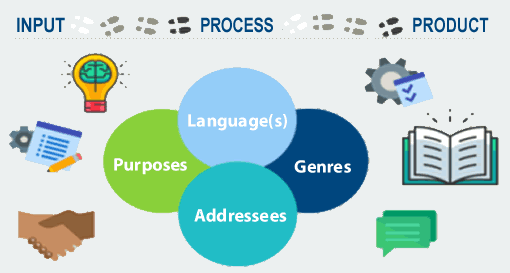What does the mediator need to consider?
In mediation tasks, there is always a two-way dynamic relationship between the input (text in Language A such as a video, an audio extract, a newspaper article etc.) and the output (oral or written text/product in Language B). The two-way relationship is dependent upon the context of situation and the task requirements.
In a cross-linguistic mediation task the mediator needs to consider:
- the source and target text: what type of texts are involved? For example, what are the characteristics of a radio show, and how can one transfer information from a radio show to a newspaper article? How can the information taken from a poster be presented in an e-mail or the content of a movie become a podcast discussion?
- the people involved: who are the interlocutors? what is the relationship between them? Given the audience, what level of formality is necessary?
- the goal of the communicative event: what is the communicative purpose of the mediation? The mediator produces a text which may: inform, clarify, explain, analyse in detail, present, promote, urge, suggest etc.
- the source and target language(s) and cultures: what languages are involved? The way we express politeness, irritation, friendliness, formality, discomfort etc. might vary significantly from one language to another.
